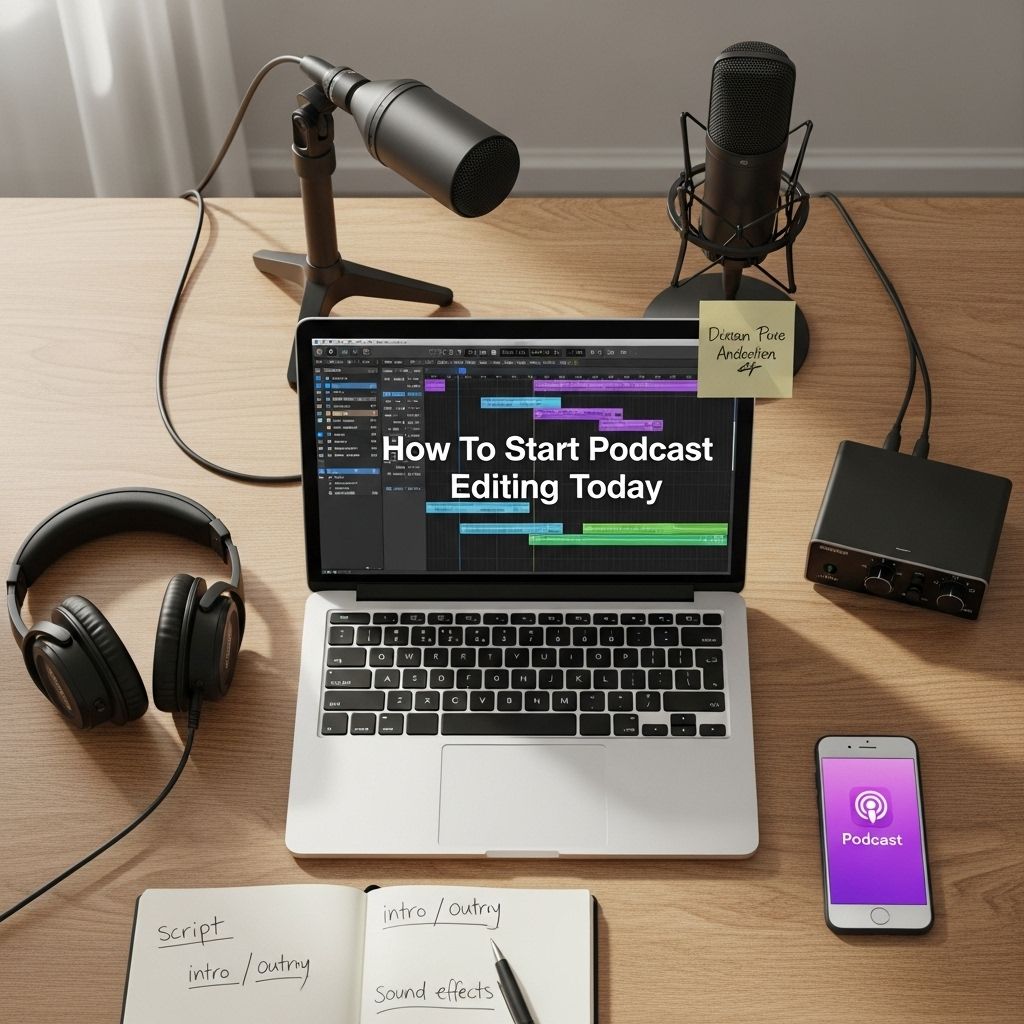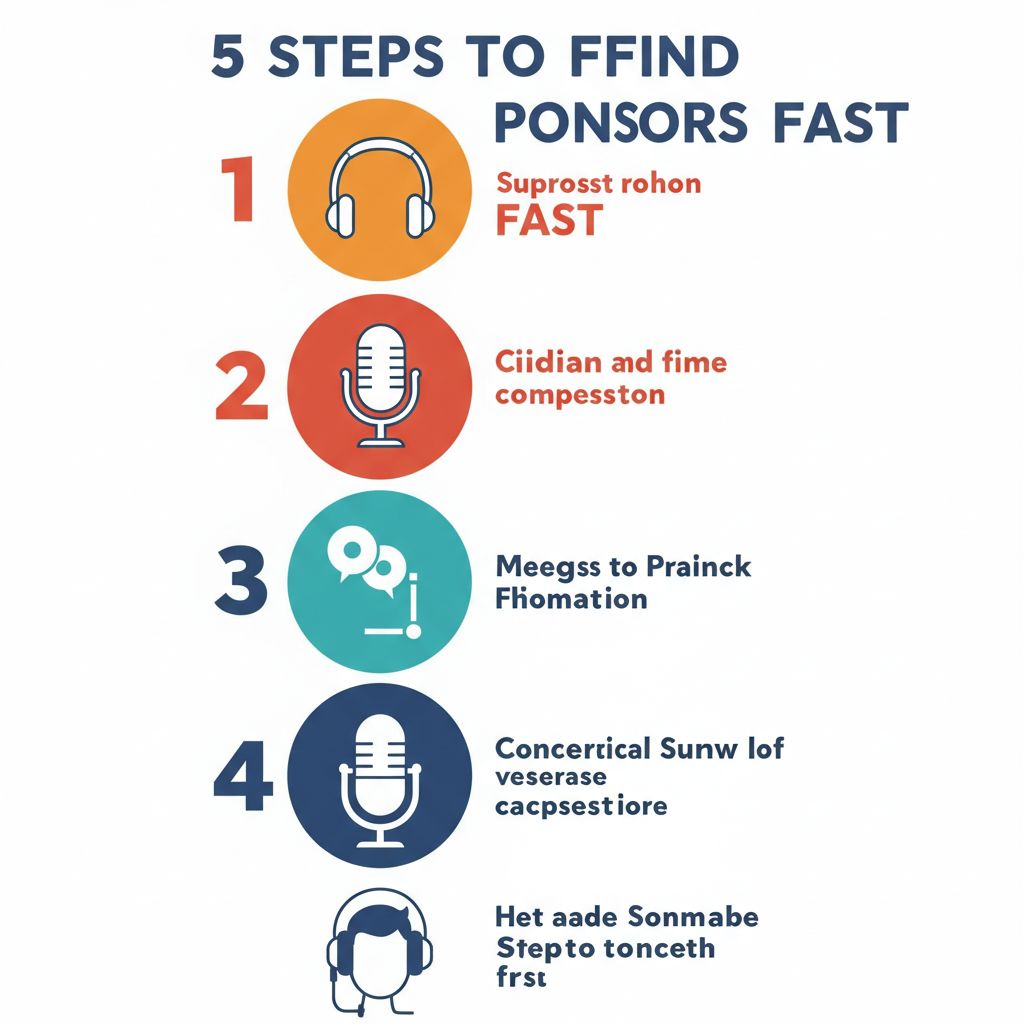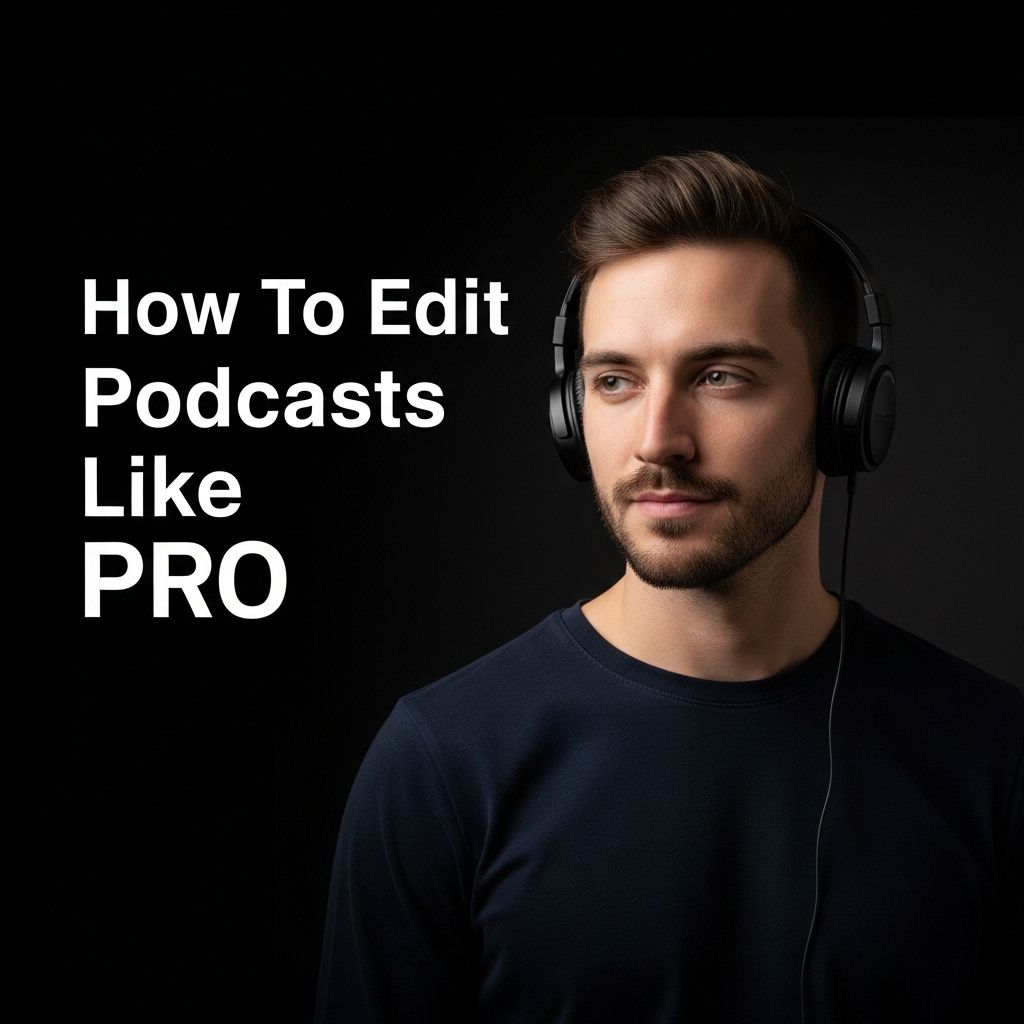Start Podcast Editing Today: A Beginner’s Guide
Learn how to start podcast editing today with easy-to-follow tips and tools that will enhance your audio quality and engage your audience.

Podcasting has become one of the most popular forms of media consumption, offering a platform for storytelling, education, and entertainment. As a podcaster, the audio quality of your episodes is crucial in capturing and retaining your audience. This article will guide you through the essential steps of podcast editing, helping you to enhance the professional quality of your recordings and keep your listeners engaged.
Table of Contents
Understanding the Basics of Podcast Editing
Before diving into the technical aspects of editing, it’s important to understand what podcast editing entails. At its core, editing is the process of refining your audio recordings by eliminating mistakes, improving sound quality, and adding elements that enhance the listening experience.
Why Editing is Important
- Improves Audio Quality: Removes background noise, adjusts levels, and balances sound for clarity.
- Keeps Content Engaging: Cuts out filler words and long pauses, keeping the conversation flowing.
- Adds Professional Touch: Incorporates music, sound effects, and transitions that maintain listener interest.
Essential Tools for Podcast Editing
To start editing your podcast effectively, you’ll need some key software and hardware tools. Here’s a breakdown of what you should consider:
Software Options
- Audacity: A free, open-source audio editing software that is user-friendly for beginners.
- Adobe Audition: A professional audio editing program with advanced features, ideal for experienced editors.
- GarageBand: A great option for Mac users, offering a range of features for music and podcast editing.
Hardware Tools
| Equipment | Description |
|---|---|
| Microphone | A high-quality microphone is essential for clear audio. USB mics are user-friendly, while XLR mics offer better sound quality. |
| Headphones | Closed-back headphones help you monitor audio without bleed, allowing for accurate editing. |
| Audio Interface | Connects your microphone to your computer, improving sound quality and providing better control over levels. |
The Editing Process: Step-by-Step
Now that you have the right tools, it’s time to start editing your podcast. Follow these steps for an effective editing workflow:
1. Import Your Audio Files
After recording, the first step is to import your audio files into your chosen editing software. Organizing your files into folders by episode can streamline this process.
2. Clean Up Your Audio
Begin by listening to your recording and identifying areas that need cleaning. This might include:
- Removing background noise using noise reduction tools.
- Trimming sections with excessive silence or filler words.
- Adjusting audio levels to ensure consistency throughout the episode.
3. Enhance the Audio
Once the audio is clean, it’s time to enhance it:
- Add music for introductions, transitions, and conclusions. Ensure you have the rights to any music you use.
- Incorporate sound effects to emphasize key points or create a more engaging experience.
- Utilize EQ and compression settings to improve the overall sound quality.
4. Structure the Episode
To maintain listener engagement, structure your episode appropriately:
- Start with a captivating introduction.
- Introduce your guests or co-hosts, if applicable.
- Segment the content into clearly defined parts, possibly using transitions.
- End with a conclusion or call to action.
5. Export Your Final Product
Once you’re satisfied with the editing process, it’s time to export the final product. Choose the appropriate file format for your podcast hosting platform, typically MP3 or WAV.
Best Practices for Effective Editing
As you develop your editing skills, keep these best practices in mind:
- Listen Critically: Always listen to your edits from a listener’s perspective.
- Be Consistent: Maintain a consistent style throughout your episodes, in terms of audio quality, music, and transitions.
- Keep It Simple: Avoid over-editing; sometimes, the natural flow of conversation is best.
Learning and Improving Your Editing Skills
Editing is a skill that improves with practice. Here are some resources to help you continue learning:
- Online Courses: Platforms like Udemy and Coursera offer courses specifically on audio editing.
- Editing Communities: Join forums or social media groups where you can share tips and get feedback on your work.
- YouTube Tutorials: A wealth of tutorials are available that can help you master specific techniques in your chosen software.
Conclusion
Effective podcast editing is a crucial element in creating high-quality audio content that resonates with your audience. By understanding the basics, utilizing the right tools, and adhering to best practices, you can enhance your podcasting skills and ensure that your episodes are both professional and engaging. Remember that the key to success lies in continuous learning and experimentation. Happy editing!
FAQ
What equipment do I need to start podcast editing?
To start podcast editing, you’ll need a good quality microphone, headphones, and a computer with audio editing software.
What software is best for editing podcasts?
Popular podcast editing software includes Audacity, Adobe Audition, and GarageBand, each offering various features suitable for different skill levels.
How can I improve my podcast editing skills?
You can improve your podcast editing skills by taking online courses, watching tutorial videos, and practicing regularly with your recordings.
Should I edit my podcast myself or hire a professional?
It depends on your budget and time. If you’re just starting, editing it yourself can save money, but hiring a professional can ensure higher quality.
What are some common mistakes to avoid in podcast editing?
Common mistakes include excessive noise, poor transitions, and failing to balance audio levels. Always listen to your edits critically.
How long should it take to edit a podcast episode?
Editing time can vary, but generally, you should expect to spend about two to three hours editing for every hour of recorded material.








